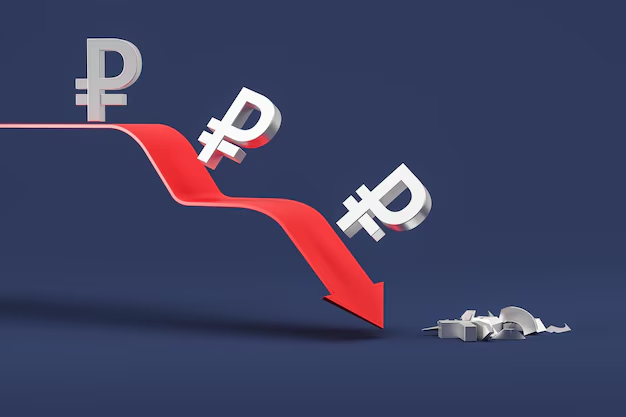When it comes to fictional worlds, the Eliksni—a species from the universe of Destiny, Bungie’s popular game franchise—stand out for their rich culture and tumultuous history. But today, we’re peeling back the layers of their story to explore something uniquely intriguing: Eliksni inflation. Yes, you read that right—economic inflation within this alien society.
Stick with me as we navigate the fascinating interplay between lore, resource scarcity, and economic trends. Whether you’re a fan of the Destiny universe or just someone interested in speculative economics, this deep dive will unpack what “inflation” means in a fictional yet surprisingly relatable context.
Setting the Scene: Who Are the Eliksni?
Before we tackle inflation, let’s briefly discuss the Eliksni themselves.
The Eliksni—also known as the Fallen—are a once-great race who thrived during their Golden Age, thanks to the power of the Traveler (a godlike celestial entity). After losing the Traveler and falling into ruin, their society fragmented. They became scavengers, struggling for survival amidst dwindling resources.
In this precarious backdrop, the concept of Eliksni inflation emerges. The scarcity of resources, combined with the loss of centralized governance, makes their economy an intriguing case study.
What Is Inflation, and How Does It Apply to the Eliksni?
Inflation, in simple terms, refers to the rise in prices over time, often caused by increased demand, reduced supply, or currency devaluation. For the Eliksni, inflation is a direct consequence of:
- Resource Scarcity: After losing access to the Traveler’s blessings, their resources became finite.
- Fragmented Economy: With various Houses (clans) operating independently, there’s no unified monetary policy.
- Barter Over Currency: The lack of standardized currency forces them into barter systems, complicating value assessments.
Key Drivers of Eliksni Inflation
1. Resource Scarcity and Economic Fragmentation
After the Collapse, the Eliksni lost access to stable resources like ether, a vital substance they consume for survival. The scarcity of ether created a domino effect:
- Increased Competition: Rival Houses hoard ether, driving its perceived value higher.
- Price Volatility: Inconsistencies between Houses mean ether’s “price” varies wildly depending on location and scarcity.
Personal Anecdote:
Imagine this like a neighborhood lemonade stand war. One kid has all the lemons but refuses to share, while the others are stuck squeezing limes and hoping no one notices. Prices skyrocket, and suddenly you’re trading your best toy truck for a glass of lemonade. That’s the Eliksni ether economy in a nutshell.
2. Lack of Central Governance
In their prime, the Eliksni had a unified system of governance under the Kell of Kells. Post-collapse, however, their society splintered into competing Houses like the House of Devils and House of Dusk.
Without centralized control, there’s no standard system for managing resources or stabilizing prices. Each House sets its own rules, leading to economic chaos.
3. Barter System Inefficiencies
With no universal currency, Eliksni trade relies heavily on bartering. This introduces challenges:
- Subjective Valuation: How many scrap parts equal one unit of ether?
- Regional Disparities: Items abundant in one House are rare in another, complicating exchange rates.
Imagine trying to buy groceries with Pokémon cards—it’s fun until someone insists their Charizard is worth an entire shopping cart.
Inflation in Action: The Cost of Ether
Ether serves as both a life-sustaining substance and a key economic driver for the Eliksni. Here’s how inflation impacts its value:
- Rising Prices: Ether is hoarded by powerful Houses, forcing smaller factions to pay exorbitant prices.
- Black Market Growth: Scarcity fuels illegal trading and smuggling, further destabilizing the economy.
- Societal Strain: Eliksni unable to afford ether are left to starve, exacerbating inequality and social unrest.
Comparisons to Real-World Economics
The plight of the Eliksni mirrors real-world inflation scenarios, albeit with a sci-fi twist. Let’s draw some parallels:
| Eliksni Economy | Real-World Example |
|---|---|
| Ether scarcity | Oil shortages |
| Fragmented governance | Post-Soviet economic collapse |
| Barter-based trade | Hyperinflation in Zimbabwe or Venezuela |
Potential Solutions for Eliksni Inflation
While the Eliksni are fictional, their economic dilemmas offer lessons in resource management and societal structure. If we were advising the Kell of Kells, here’s what we’d suggest:
1. Establish a Unified Currency
A standardized currency could simplify trade and stabilize prices.
2. Resource Redistribution
Creating a fair system for ether allocation would reduce hoarding and price gouging.
3. Inter-House Alliances
Encouraging collaboration between Houses could foster a more stable economy.
The Human Connection: Why This Matters
Why should we, mere Earthlings, care about Eliksni inflation? Beyond its fictional charm, it’s a reflection of universal truths about survival, scarcity, and community.
Personal Insight:
I once traded an old gaming console for a stack of books during a rough financial patch. That experience taught me the value of adaptability and resourcefulness—two traits the Eliksni embody.
Conclusion
The story of Eliksni inflation isn’t just about alien economics; it’s a reminder of how fragile systems can become when scarcity and division take hold. Whether in fiction or reality, the challenges they face echo our own struggles with resources, governance, and equity.
As you navigate your own world—be it virtual or real—remember the lessons of the Eliksni: adapt, collaborate, and strive for balance. After all, the line between their struggles and ours isn’t as alien as it seems.


